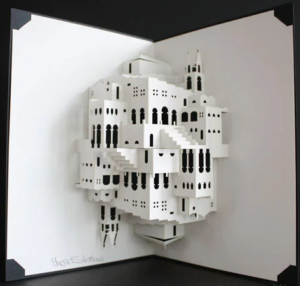Metaphors We Live By
- Lakoff + Johnson give several examples throughout the text of linguistic metaphorical systems. Are there any you found odd, outdated, or different from metaphorical systems that you use, either personally or in your language, culture, or social sphere? For instance, do you speak about conversation as battle, or use orientational metaphors the same way the authors describe?
I resonate with Lakoff & Johnson’s linguistic metaphorical systems. In Chinese background, we use metaphor everywhere and it is an important part in Chinese language. We have the same metaphor which is “唇枪舌战” about conversation as battle. To translate, “唇” is lip; “枪” is spear; “舌” is tongue and “战” is battle. It assimilates lip and tongue as weapons, which more vividly display an intense debate. Besides, orientational metaphors are also been used frequently in Chinese language. For example, the most common slogan in Chinese school, “好好学习天天向上”, means study hard and make progress every day. The words “向上” represents going up, which means positive is up, negative is down.
- Can you identify a metaphorical system that you commonly use? What do you think is the motivating rationale (“experiential basis”) behind that system – or is there one? Have you ever intentionally (or unintentionally) changed the metaphorical system that you use to speak about a certain subject, to reflect a different experience or worldview?
The metaphorical system I commonly use is the “copy” and “paste” operations on computer. For the logic behind this, the word copy means making a same object. On computer, I think the “copy” command’s function is pretty straight forward. It duplicates selected items. For the paste word, it means stick something to something. On computer, the function of “paste” operation is putting copied items on a selected area. We can easily understand the function of “copy” and “paste” by just looking at the two operation names. I intentionally use the two words in real life context when I see two people have similar appearance or action.
- What metaphors/systems of metaphor are commonly used when discussing your topic? If “the essence of a metaphor is understanding and experiencing one kind of thing in terms of another” (5), what other kinds of metaphors might be useful for discussing your topic, or an aspect of your topic?
When discussing my “quilting” topic, I would say connection may be the metaphor. For my understanding, connection means the relationship and link between two objects, peoples, communities, etc. The joint between two objects moved from physical one to transparent one(the connection of tradition and modern, handicraft and mechanization,etc). For the other kinds of metaphors I would use bridge and gap as the metaphors which also demonstrate the connection and disconnection between different groups people, communities and social environment.





